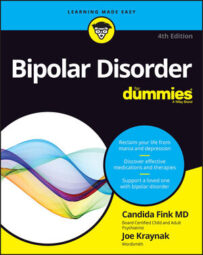Many people wonder whether name-brand medications are any better or even any different from their generic equivalents. Although the Food and Drug Administration (FDA) regulates both name-brand and generic medications, how those regulations apply to generic medications can lead to differences in how effective the medication is and in the side effects it causes, even when the generic has the same amount of the same active ingredient(s) as the name-brand version.
The following sections provide the guidance you need to make well-informed choices between generics and name-brand medications.
Consider the cost
Most of the time for most people and with most medicines, generics are equivalent products and work just fine. The choice is usually straightforward: With the generic costing less, working just as well, and having the same or similar side effect profile, the more affordable generic is the better choice. However, in a minority of situations, the name-brand product is the better choice.In some cases, cost can be the determining factor in whether the person is able to obtain and take the medication. Being able to afford medications is critical for people to take the right amount of medication and to keep taking it. If the medicine is too expensive, people sometimes try to ration their medicines by lowering or skipping doses or even stopping a medicine entirely.
Oddly, in certain situations, insurers cover the cost of a certain name-brand medication but not its generic. This is usually related to a financial arrangement between the insurance company and the pharmaceutical company that makes the name-brand product.Similarities between name-brand and generic medications
According to the FDA, generic medications contain the same active ingredients as their name-brand counterparts, so theoretically, they should be equally effective, and in most cases they are. Here's how the two are similar:-
Same active ingredient(s): The vast majority of generic medications contain the same active chemical as in the name-brand version.
-
Very similar bioequivalence: The generic version of the medication must be bioequivalent to the name brand. To be bioequivalent, the bioavailability of the generic must be very similar to that of the original medication. Bioavailability represents the amount of active chemical that gets into the system and the rate at which it does so. The bioavailability of the generic doesn't have to be identical to that of the original medication; it can be between 80 and 125 percent of the name brand. This may sound like a wide variation, but for most medications, in most people's bodies, the difference doesn't seriously affect how the generic works or the side effects it causes when compared to the name brand.
Differences between name-brand and generic medications
Although the generic is required by the FDA to deliver nearly the same amount of the same active ingredient(s) at about the same rate as the name-brand version, response to differences in the two can become more pronounced in the following areas:-
Individual response: How a person's body absorbs and then breaks down the medication can affect their response to a medication that's more or less bioavailable. If you change from a name brand to a generic, or vice versa, and you feel differently on it, let your doctor know.
-
Medication class: Certain classes of medications have had some difficulties with these differences in bioavailability. For example, anticonvulsants (medicines for seizures, that are also often used to treat bipolar disorder) have a narrow therapeutic window, which means that getting control of seizures can require extremely tight management of doses and blood levels (within very narrow ranges). Studies have suggested that although patients who are started on a generic brand of an anticonvulsant may do well, changing from a previously well-managed dose of name brand to a similar dose of generic may cause reduced control of seizures. No specific studies show the same challenges with preventing mood cycles, but you and your doctor should consider and discuss the possibility.
-
Extended-release versions: Long-acting versions of medications can be more difficult for generic companies to duplicate. In 2012, the FDA withdrew approval for a particular type and dose of a generic form of the long-acting antidepressant Wellbutrin XL. After patient and doctor complaints, the FDA tested and found that the generic version was only about 40 percent as bioavailable as the name brand. Other generic versions (by other manufacturers) were bioequivalent, but this one was withdrawn from the market. A similar incident happened recently with a generic version of the long-acting ADHD medication Concerta.
-
Fillers: Medications include a variety of fillers and dyes that create the actual pill. Individuals may have more or less tolerance for these inactive ingredients (whether they're in the generic or name-brand version); they may even experience allergic reactions to them.
Dealing with differences between generics of the same medication
One downside to using a generic product is that a number of different manufacturers typically make the same product, and pharmacies may change suppliers to manage cost or supply levels. So, even though you may be stable on a generic version of your medicine, when you switch to a different generic, your response could change. With anti-seizure medications, this can be especially risky, but it could affect benefits or side effects in less dangerous but very important ways with other kinds of medicine, as well.Another concern is that the generic may look different depending on the manufacturer, which isn't usually a big problem, but it can cause challenges for certain populations, such as the elderly, who may experience confusion with that kind of change, or children, who may have difficulty swallowing a pill if it is much larger, for example.

